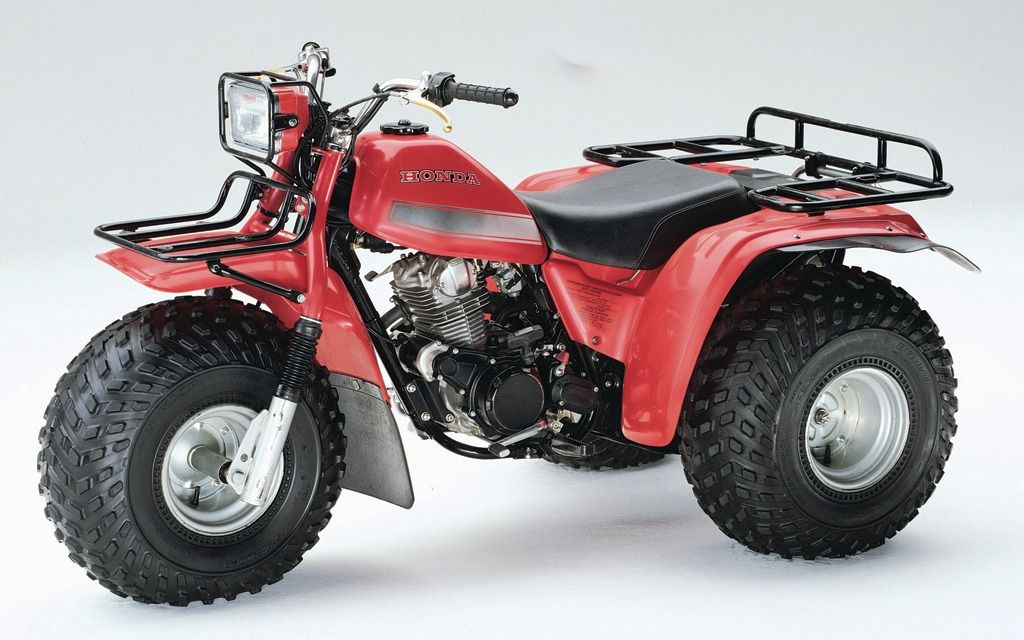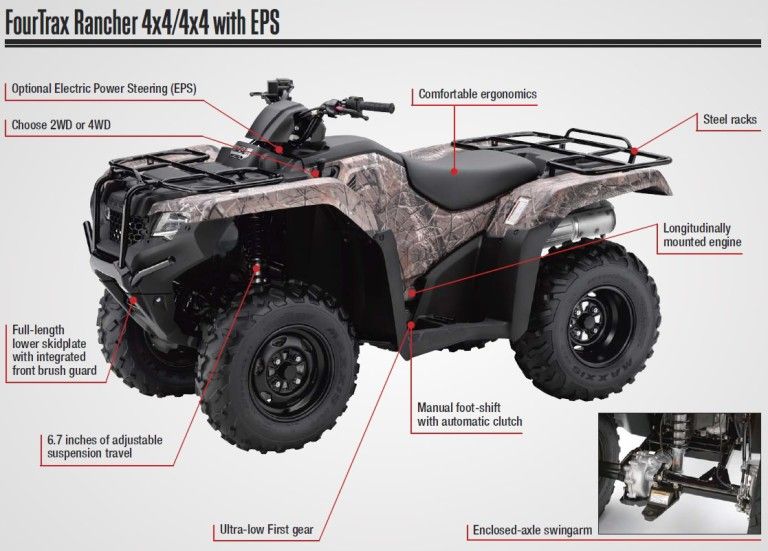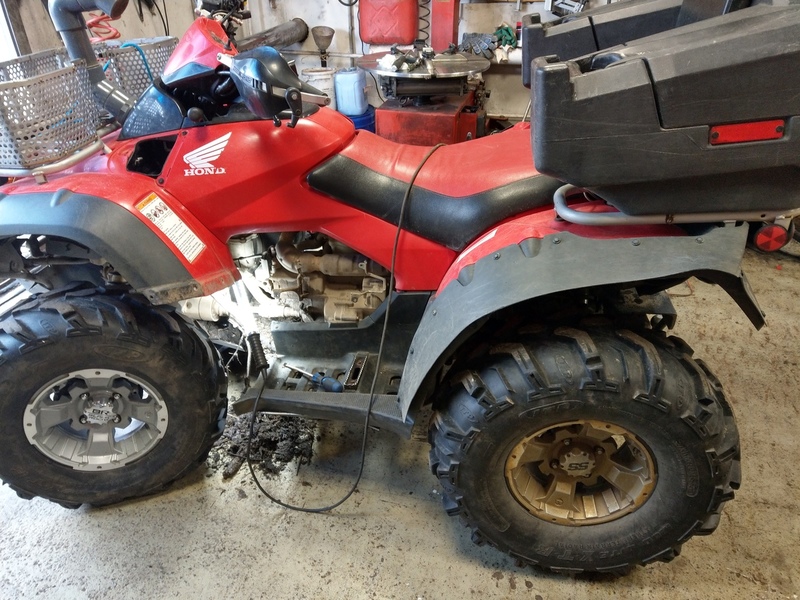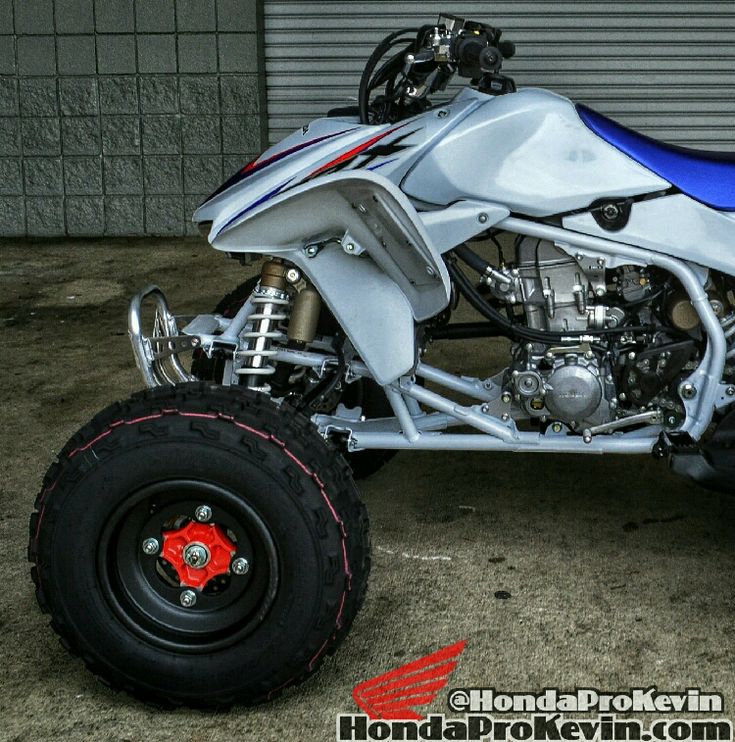Generally, VIN for Honda ATV is embedded on the front crossmember which is usually built behind the rack at the front. However, you may not see it easily if you are using custom skid plates. But you can unravel it quickly and see the VIN. For the Honda Rancher ATV, the VIN is located on the crossmember built at the front of ATV.
Where is the VIN on an ATV? Every sport ATV has a 17 digit VIN (vehicle identification number), even if you need to search for the ATV VIN location a little. You’ll find the VIN plate mounted to the frame of the ATV, usually on the bottom left side.
Where is the VIN on a Honda rancher? Honda Rancher VIN Locations – The Honda Rancher serial number location for 350’s and 420’s from 2000 to 2013 is on a cross-member at the front of the ATV. This is a typical Honda VIN location and is visible through the opening in the front cowl between the headlights.
What is a Honda ATV Vin? Honda ATVs have a Vehicle Identification Number that can be used to trace the ATV back to the manufacturer and even to the exact point the ATV came off the production line. Other information contained in the VIN is the year of manufacture, make and engine style, and a check digit in the middle of the VIN to prevent vehicle identification fraud.
Where is the VIN number on a Yamaha Raptor? Yamaha Raptor VIN can be found stamped into the left, frame rail, just beneath the shifter. KYMCO ATV VIN are sometimes located on the front frame rail. Kawasaki ATV’s The VIN can often be found on the left front frame rail behind the wheel. ATV & Quad Bike VIN Number Locations.
Table of Contents
Locate the VIN number on the frame of the ATV. This number is usually found near the front end of the vehicle on the left side under the shift lever. The title of the ATV will also have the VIN number on it. Check to make sure that the second letter of the VIN is a “Y”.
– 1 = Country of manufacture (United States)
– H = Manufacturer (Honda)
– G = Vehicle Type (Passenger car)
– EJ8 = Model (Civic 2/4 Door 1. 6L)
6L)
– 1 = Body Type, Transmission (2 Door Coupe, Manual)
– 4 = GRADE (Civic EX 2/4 Door)
– 5 = Security Code.
– W = Model Year (1998)
Hidden or Confidential VIN The VIN was stamped into various metal objects on the vehicle, including the frame, the body, the engine, transmission and other places. The VIN on the frame or the body became known as the Hidden VIN, the Confidential VIN or the Federal VIN.
The first digit denotes the country of origin. If the initial number is a 1, the ATV was manufactured in the U.S. If it is a J, it means your Honda was made in Japan. The second digit will be an H for Honda. The third digit is the vehicle type or manufacturing division.
If you still can’t find it, check your vehicle’s registration certificate or the owner’s manual (if you have it). You can also call the dealership or manufacturer, give them the make and model of your vehicle and ask where the VIN is located.
You can also call the dealership or manufacturer, give them the make and model of your vehicle and ask where the VIN is located.
Check that the 10th digit matches the year of manufacture. From 2000 onward, it is a number, and before 2000, it is a letter. For example, a 1998 model will have the letter W in the 10th position. Determine the plant where the ATV was made with the 11th digit.
The Honda engine serial number is stamped into the side of the engine. All Honda engine serial numbers include a 4 or 5-letter prefix, followed by a 7-digit number.
Where the VIN is stamped depends on the model of your vehicle. For ATVs from model year 2011 to the present, the VIN usually is located either in the front left wheel well or the back left lower frame rail.
– Examine the first digit of the VIN number to find the manufacturer country of origin.
– Find the second digit in the VIN number sequence to determine the manufacturer of the vehicle.
– Read the third character in the VIN number sequence to find out the vehicle type.
– On vehicles from 1997 and newer, the VIN is 17 digits.
– For Sportsman 400, 450, 500, 570, 800 and ETX models; 2013 Hawkeye models and Sportsman 6×6 models from 2011-14, the VIN can be found on the left rear frame (1).
Check that the 10th digit matches the year of manufacture. From 2000 onward, it is a number, and before 2000, it is a letter. For example, a 1998 model will have the letter W in the 10th position. Determine the plant where the ATV was made with the 11th digit.
The 17-digit vehicle identification number of a Honda all-terrain vehicle is generally located on the main cross member where it’s stamped during the assembly process. The main crossbar connects the left and right handles, and is usually covered by padding or plastic for safety and aesthetics.
The main crossbar connects the left and right handles, and is usually covered by padding or plastic for safety and aesthetics.
The VIN (17-digit ) is located on a plate fastened to the top of the dashboard. You can see it through the windshield on the driver’s side. The VIN is also available from your vehicle registration or insurance card.
The VIN (17-digit ) is located on a plate fastened to the top of the dashboard. You can see it through the windshield on the driver’s side. The VIN is also available from your vehicle registration or insurance card.
The Vehicle Identification Number (VIN) of your Polaris ATV is a unique number used to identify your vehicle. It is stamped on the frame of your ATV. On vehicles from 1997 and newer, the VIN is 17 digits.
The ATV VIN number charts and information to help you search for and decode your ATV’s VIN. Every sport ATV has a 17 digit VIN (vehicle identification number), even if you need to search for the ATV VIN location a little. You’ll find the VIN plate mounted to the frame of the ATV, usually on the bottom left side. This information guide will help you with ATV VIN identification.
Every sport ATV has a 17 digit VIN (vehicle identification number), even if you need to search for the ATV VIN location a little. You’ll find the VIN plate mounted to the frame of the ATV, usually on the bottom left side. This information guide will help you with ATV VIN identification.
Kawasaki for example has the VIN mounted on the left side of the frame below the engine. If you have nerf bars installed it’s possible that part of the VIN will be hard to see. Don’t mistake the engine number, which is mounted on the engine, as a VIN number because they are different.
A VIN or Vehicle Identification Number is standardized. Whether your ride a Honda, Kawasaki, Suzuki, Polaris, Yamaha or other ATV all will contain 17 characters that can include capital letters from A through Z and numbers 1 through 0. The letters I, O and Q are never used within a VIN in order to avoid mistakes made by misreading them. No signs or spaces are allowed in the Vehicle Identification Number.
The position of each letter and/or number in the VIN code reveals important information about where and when your ATV was made, the type of engine it has, the model or series of ATV, various equipment/attributes and its production sequence.
Contact the vehicles manufacturer with specific VIN related questions. Contact your local DMV, department of motor vehicles, if you need to replace your VIN plate (if it broke off or you installed a new frame etc). Here is a general breakdown of what your ATV VINs number means.

| 1971 | 1 |
| 1972 | 2 |
| 1973 | 3 |
| 1974 | 4 |
| 1975 | 5 |
| 1976 | 6 |
| 1977 | 7 |
| 1978 | 8 |
| 1979 | 9 |
| 1980 | A |
| 1981 | B |
| 1982 | C |
| 1983 | D |
| 1984 | E |
| 1985 | F |
| 1986 | G |
| 1987 | H |
| 1988 | J |
| 1989 | K |
| 1990 | L |
| 1991 | M |
| 1992 | N |
| 1993 | P |
| 1994 | R |
| 1995 | S |
| 1996 | T |
| 1997 | V |
| 1998 | W |
| 1999 | X |
| 2000 | Y |
| 2001 | 1 |
| 2002 | 2 |
| 2003 | 3 |
| 2004 | 4 |
| 2005 | 5 |
| 2006 | 6 |
| 2007 | 7 |
| 2008 | 8 |
| 2009 | 9 |
| 2010 | A |
| 2011 | B |
| 2012 | C |
| 2013 | D |
| 2014 | E |
| 2015 | F |
| 2016 | G |
| 2017 | H |
| 2018 | J |
| 2019 | K |
| 2020 | L |
– VIN Number Year Chart and it continues year by year: 2011 = B, 2012 = C, 2013 = D, 2014 = E, 2015 = F, 2016 = G etc. 2018 = J, 2019 = K, 2020 = L, you get the idea. Important: The letters i,q, u and o are never used so skip them accordingly. Also important: To tell the difference between an older and newer ATV the 7th digit is referenced. Example, the letter A in 10th position could mean a 1980 or a 2010 ATV. To know which it is look to the 7th digit, if the 7th digit is a number the earlier year is accurate. If the 7th digit is a letter the later year is accurate.
– 11th digit : Assembly plant
– 12th to 17th digits : These ATV vin numbers increase by one for each unit that rolls off the assembly line, the last four are always numbers.
See also
It’s very helpful to know your ATV VIN when purchasing aftermarket parts. Here is a chart of what your Honda ATV VIN may look like, it’s useful information to have when doing a VIN check.
Honda VIN Chart
To do a free ATV VIN search visit the ATV VIN Check page.
Frequently asked questions on Yamaha outboard motors are:
Nameplate - an information plate that contains inscriptions and symbols related to the marked product. A slang word that replaced the earlier term - schild.
A slang word that replaced the earlier term - schild.
We will try to show and decipher all this.
The serial number of your Yamaha outboard motor can be found on the manufacturer's sticker affixed to the left side of the clamp bracket (on 2 HP models, the sticker is attached to the top of the swivel bracket)
| P | 1983 | 2004 | ||||
|---|---|---|---|---|---|---|
| q | 1982 | 2003 | ||||
| 1 | 2002 | |||||
| 1 | 1 | 1 | 2001 | |||
| T | 1979 | 2000 | ||||
| U | 1978 | 1999 | ||||
| V | 1977 | 1998 | ||||
| W | 1976 | 1997 | ||||
| x | 1975 | 1996 | ||||
| y | 1974 | 1995 | ||||
| Z |